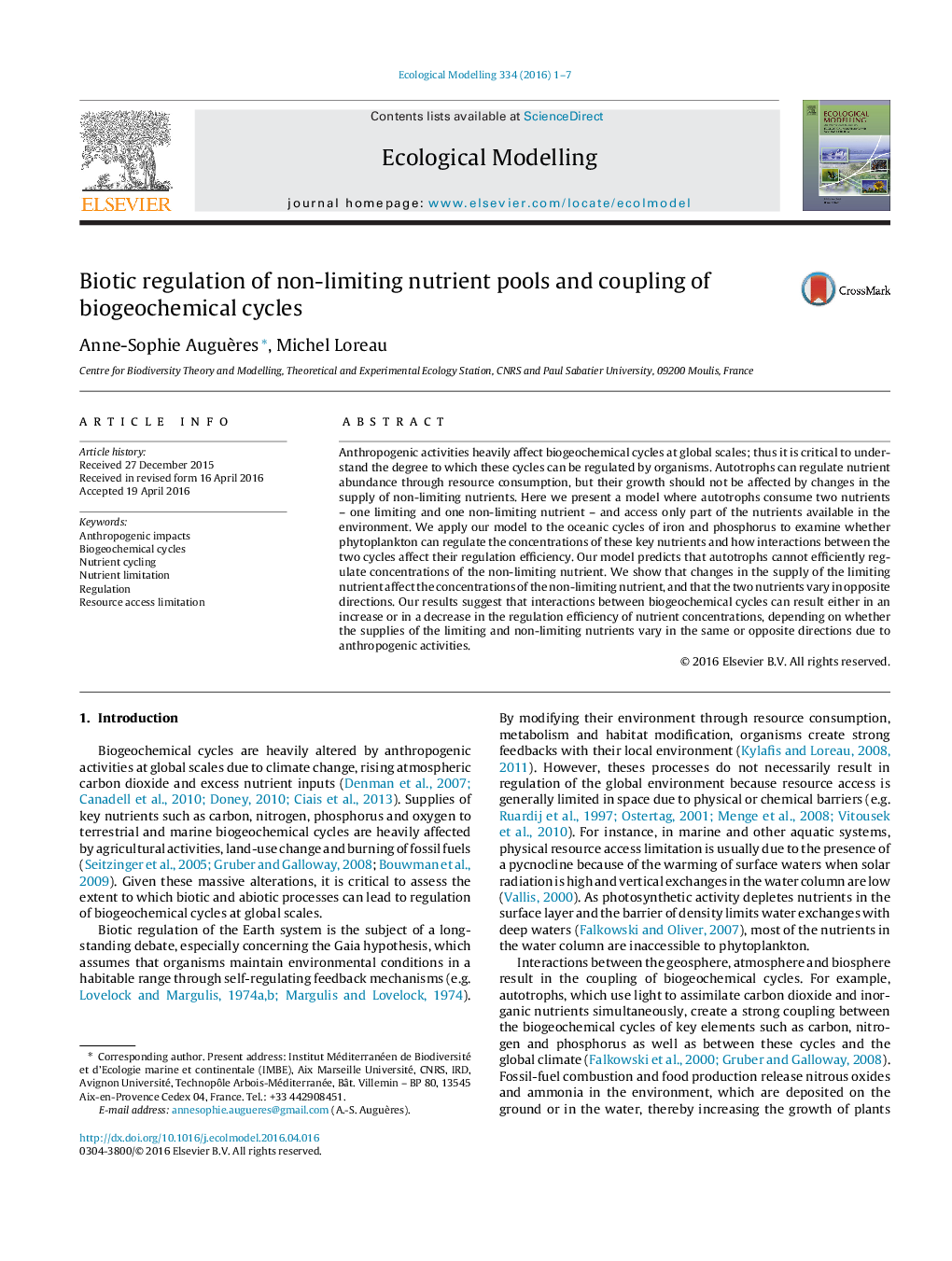| Article ID | Journal | Published Year | Pages | File Type |
|---|---|---|---|---|
| 6296121 | Ecological Modelling | 2016 | 7 Pages |
Abstract
Anthropogenic activities heavily affect biogeochemical cycles at global scales; thus it is critical to understand the degree to which these cycles can be regulated by organisms. Autotrophs can regulate nutrient abundance through resource consumption, but their growth should not be affected by changes in the supply of non-limiting nutrients. Here we present a model where autotrophs consume two nutrients - one limiting and one non-limiting nutrient - and access only part of the nutrients available in the environment. We apply our model to the oceanic cycles of iron and phosphorus to examine whether phytoplankton can regulate the concentrations of these key nutrients and how interactions between the two cycles affect their regulation efficiency. Our model predicts that autotrophs cannot efficiently regulate concentrations of the non-limiting nutrient. We show that changes in the supply of the limiting nutrient affect the concentrations of the non-limiting nutrient, and that the two nutrients vary in opposite directions. Our results suggest that interactions between biogeochemical cycles can result either in an increase or in a decrease in the regulation efficiency of nutrient concentrations, depending on whether the supplies of the limiting and non-limiting nutrients vary in the same or opposite directions due to anthropogenic activities.
Related Topics
Life Sciences
Agricultural and Biological Sciences
Ecology, Evolution, Behavior and Systematics
Authors
Anne-Sophie Auguères, Michel Loreau,
